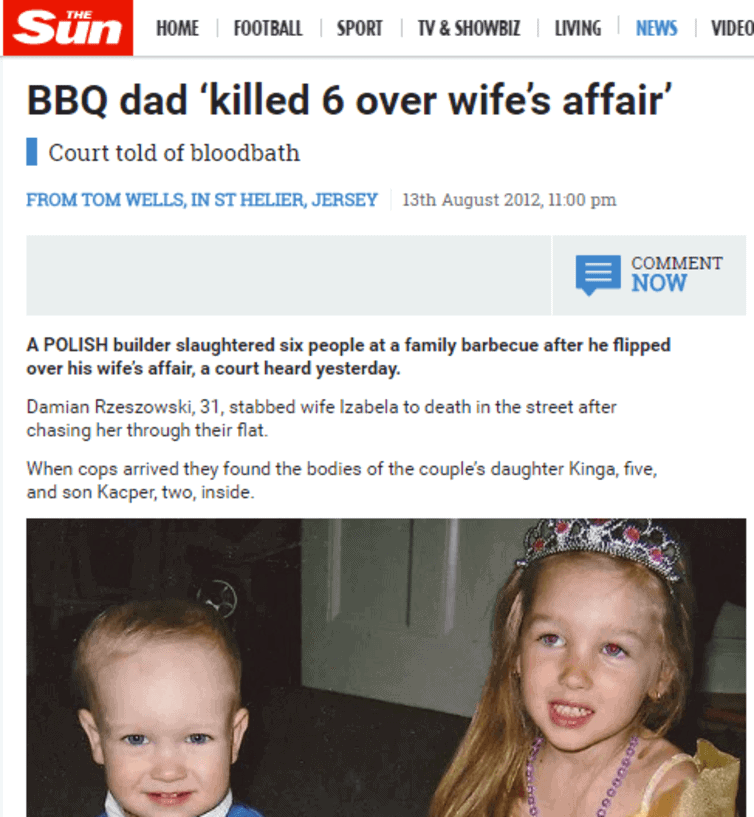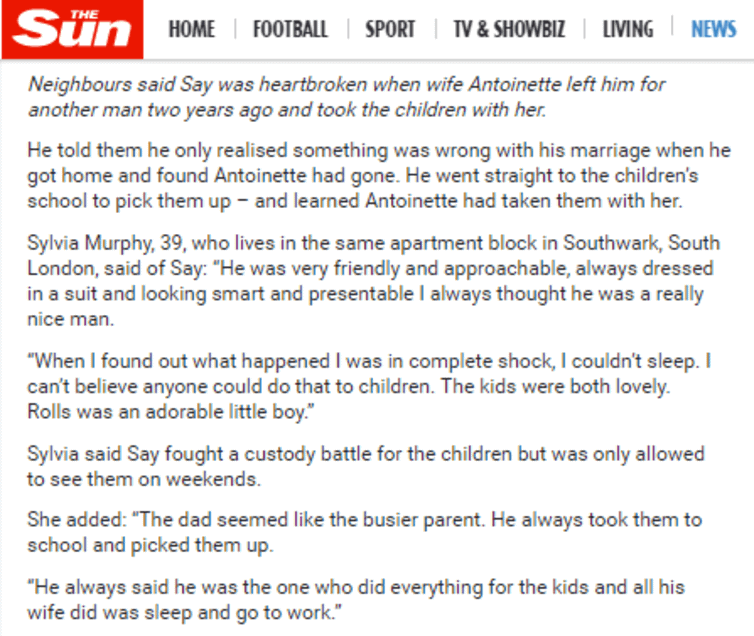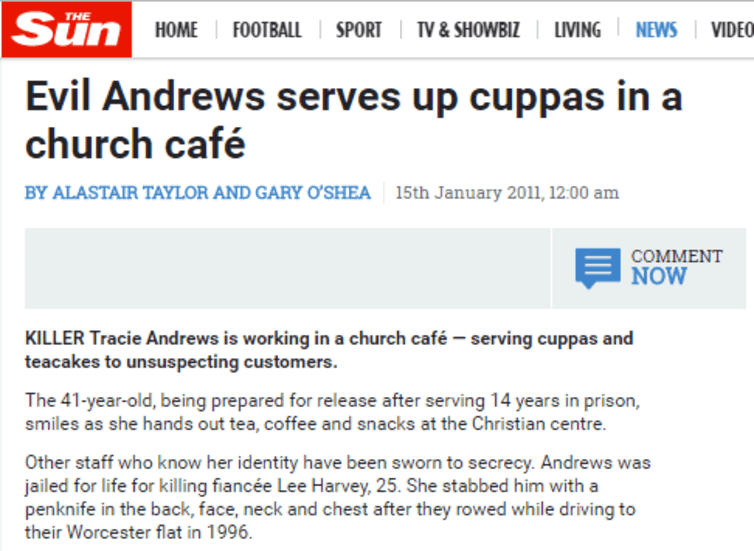Blame the victim? Domestic violence as covered in The Sun and The Guardian
Michele Lloyd, University of Hertfordshire and Shulamit Ramon, University of Hertfordshire
Domestic violence is an enduring problem in the UK: an average of two women a week continue to be killed by their current or former partner. It’s a widespread and important story, and – like all news media – newspapers make a decision about how to report this issue.
But, unlike television and radio broadcasting, the print media in the UK is not required to be impartial. And although newspaper content is not necessarily absorbed uncritically by readers, the way editors and journalists frame news stories can influence the “take home” message communicated to readers.
We explored how The Sun and The Guardian reported domestic violence in 2001-2 and 2011-12 to evaluate evidence of change over a ten-year time span. The rationale for selecting these newspapers was based on their contrasting formats: The Sun is the biggest-selling newspaper in the UK, tabloid in style and traditionally right-of-centre politically, while The Guardian is a left-of-centre broadsheet with a far smaller circulation but a far larger online readership.
We studied both online and hard copy articles of the two papers: these included analyses of victims (predominantly women) and perpetrators (predominantly men). While The Guardian adopted a respectful position towards women victims, the textual and visual techniques adopted by The Sun reveal a tendency for victim blaming and, in some cases, giving character references for the perpetrators.
The stimulus for investigating newspaper reporting of domestic violence was a European Union funded project led by the University of Hertfordshire with partners in Greece, Italy, Poland and Slovenia, which researched the well-being of women experiencing both domestic violence and mental health issues.
The expressed guilt of the women participants made us consider what leads victims of this type of violence to accept guilt, blame and shame instead of holding perpetrators accountable. Given the influential role played by the media in both shaping and reflecting public opinion on issues such as domestic violence, this second project examining newspaper coverage of such violence was undertaken.
Laying the blame
The most commonly identified theme derived from our newspaper research was how The Sun appears to hold women responsible for their own abuse. Replete with descriptions of men who have killed their partners as “spurned lover”, “jilted lover” and “jealousy-crazed”, The Sun seems to be insinuating that the woman is culpable, partially at least, for her victimisation.
 How The Sun reported the story.
How The Sun reported the story.
The Sun
A key case in point was a story reported from the island of Jersey where a man called Damian Rzeszowski killed his wife, Izabela, two children and his father-in-law as well as a family friend and her daughter. The Sun described how he “slaughtered six people at a family barbecue after he flipped over his wife’s affair”. This gave the impression that it was the woman’s alleged infidelity that triggered the bloodshed. The Sun describes Rzeszowski as a “doting dad” and Izabela as “cheating on him”, again denoting her as a blameworthy victim.
Similarly, when a father, Jean-Francis Say, fatally stabbed his two children, The Sun observed that his wife had left him for another man two years earlier, taking the children with her.
 ‘All his wife did was sleep and go to work’.
‘All his wife did was sleep and go to work’.
The Sun
A neighbour was quoted saying that Say had told her he was always the one who did things for the children while “all his wife did was sleep and go to work”. The use of this quote appears to disparage a woman whose children have been killed.
When women kill
This contrasts with the description of “evil” Tracie Andrews, convicted of killing her boyfriend and subsequently in preparation for release from prison. Entitled “Evil Andrews serves up cuppas in a church cafe”, The Sun article juxtaposes her evilness with the sanctity of a church café and having a “cuppa”. Compare “evil”, redolent of internal, innate characteristics, with the descriptions of men who “snapped” or “flipped” and whose actions were “out of character”, thus suggestive of external, qualifying triggers.
 Female killers treated differently in The Sun.
Female killers treated differently in The Sun.
The Sun
The Guardian does not tend to engage in a victim-blaming narrative, which is a key issue when trying to understand the reporting of domestic violence which ends in the death of one of the partners. Sandra Horley, the chief executive of Refuge – who has been a prominent advocate on this issue – states that domestic violence cases are not about one partner “losing [their] temper” or “flipping out”, they are about systematic control and abuse.
Domestic violence
When it comes to covering domestic violence as an issue, we found that The Guardian had consistently outnumbered The Sun in relation to the amount of articles published over the whole of our survey period.
 How the two papers compare on domestic violence.
How the two papers compare on domestic violence.
Michele Lloyd and Shula Ramon, Author provided
A closer inspection also revealed that The Guardian’s coverage had far more in-depth analysis of domestic violence overall, while The Sun tended to report on individual cases in a sensational manner.
Domestic violence in the news is seldom framed as a societal public health issue – but rather an individualised problem or somehow precipitated by victims. Our research, book-ended by the years 2001-2 and 2011-12, found that the ten-year passage of time has diminished neither the medium nor the message of The Sun in terms of blaming victims, and reinforcing society’s normalisation of privatised violence as “just another domestic”.
Michele Lloyd, Senior Lecturer, School of Education, University of Hertfordshire and Shulamit Ramon, Professor, Mental Health Research, University of Hertfordshire
This article was originally published on The Conversation. Read the original article.
Main photo by Mika Baumeister on Unsplash.